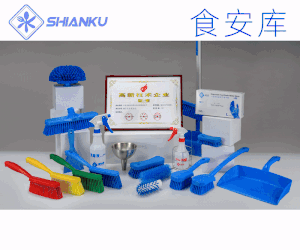食品伙伴網(wǎng)訊 2024年1月29日,歐盟食品安全局就一種食品酶蛋白質(zhì)-谷氨酰胺γ-谷氨酰轉(zhuǎn)移酶(protein–glutamine γ-glutamyltransferase)的安全性評價(jià)發(fā)布意見。
據(jù)了解,這種食品酶是由非轉(zhuǎn)基因茂原鏈霉菌菌株M2020197生產(chǎn)的,旨在用于八種食品生產(chǎn)過程:加工谷物和其他谷物以生產(chǎn)焙烤產(chǎn)品,非焙烤的谷物基產(chǎn)品;加工乳制品以生產(chǎn)發(fā)酵乳制品、奶酪、乳制品甜點(diǎn);加工植物和真菌衍生產(chǎn)品以生產(chǎn)人造肉,基于植物的牛奶和奶制品類似物;加工肉類和魚類產(chǎn)品以生產(chǎn)改良的肉類和魚類產(chǎn)品。
經(jīng)過評估,專家小組認(rèn)為,在預(yù)期的使用條件下,不能排除通過飲食接觸引起過敏反應(yīng)的風(fēng)險(xiǎn),但這種情況發(fā)生的可能性很低。根據(jù)所提供的數(shù)據(jù),小組得出結(jié)論,該食品酶在預(yù)期的使用條件下不被認(rèn)為是安全的。部分原文報(bào)道如下:
The food enzyme protein–glutamine γ-glutamyltransferase (protein–glutamine: amine γ-glutamyltransferase; EC 2.3.2.13) is produced with the non-genetically modified Streptomyces mobaraensis strain M2020197 by Taixing Dongsheng Bio-Tech Co. Ltd. The identity of the production strain and the absence of viable cells could not be established. The food enzyme is intended to be used in eight food manufacturing processes: processing of cereals and other grains for the production of (1) baked products, (2) cereal-based products other than baked; processing of dairy products for the production of (3) fermented dairy products, (4) cheese, (5) dairy desserts; processing of plant- and fungal-derived products for the production of (6) meat analogues, (7) plant-based analogues of milk and milk products; processing of meat and fish products for the production of (8) modified meat and fish products. Dietary exposure to the food enzyme–total organic solids (TOS) was estimated to be up to 3.498 mg TOS/kg body weight (bw) per day in European populations. Genotoxicity tests did not indicate a safety concern. The systemic toxicity was assessed by a repeated dose 90-day oral toxicity study in rats. The Panel identified a no observed adverse effect level of 91 mg TOS/kg bw per day. The calculated margin of exposure for each age group was 36 (infants), 26 (toddlers), 50 (children), 99 (adolescents), 115 (adults) and 133 (the elderly). A search for the similarity of the amino acid sequence of the food enzyme to known allergens was made and no match was found. The Panel considered that a risk of allergic reactions upon dietary exposure to this food enzyme cannot be excluded, but the likelihood is low. The safety of the food enzyme could not be established given the derived margins of exposure. Therefore, the Panel concluded that the food enzyme could not be considered safe under the intended conditions of use.
本文由食品伙伴網(wǎng)食品資訊中心編輯,供網(wǎng)友參考,有任何疑問,請聯(lián)系news@foodmate.net。
相關(guān)政策解讀











 地區(qū):
地區(qū):






 魯公網(wǎng)安備 37060202000128號
魯公網(wǎng)安備 37060202000128號



